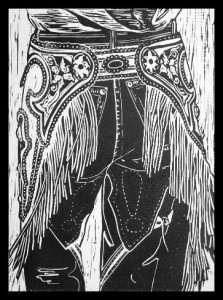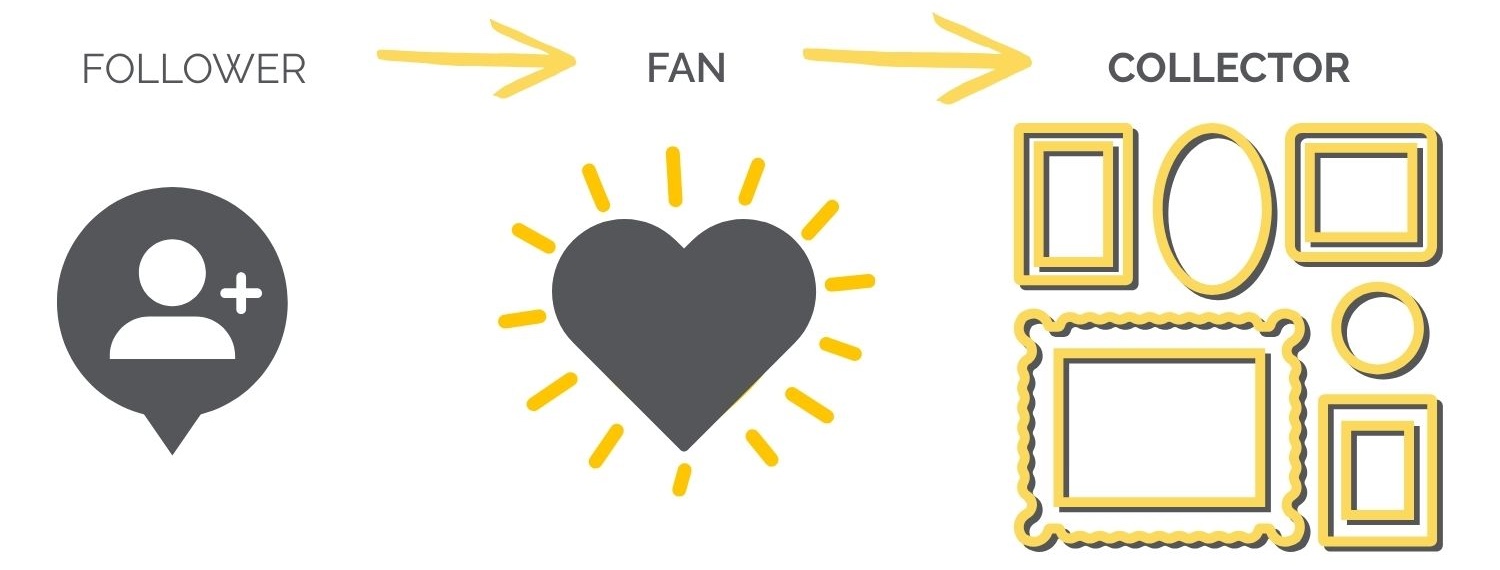Someone buys a piece of art directly from you. You’re about to hand over the art, but then you wonder if you should be providing anything else at the same time. Consider including the following six items with each sales transaction.

- A receipt of sale
- Your business card
- A brochure about your art
- Instructions on caring for the art
- Copyright notice
- Certificate of Authenticity–if needed
The fifth item on the list is important. Most buyers will not know or may not understand that you retain copyright or what that even means. Use gentle wording. “While you own the artwork, please be aware that I retain copyright to the image. This means . . . “ should do it. It’s a lot nicer than “WARNING! The artist retains copyright. You may not duplicate this work in any form without consulting the artist first!”
[ The copyright notice can be combined with the Certificate of Authenticity. ]
You shouldn’t give buyers–upon purchase–anything more than what I’ve listed above. Why? Because you want to save other items to send later. You’ll need to follow up regularly in order to keep your name in front of your collectors.
Start by sending a Thank You note in the mail within a week of the sale. You can’t be assured that an email will get through to the recipient, but you can be 100% positive that a handwritten note will be appreciated and will stand out. Then, every few months, send your collectors anything from the list below.
- Articles about you, about art, about collecting
- Articles about something you know is of interest to the recipient (I couldn’t help thinking of you when I saw this . . . )
- Changes in your contact information
- Invitations to events, gallery openings, teleclasses, etc.
- Newsletters (See I’d Rather Be in the Studio! pages 117-137 for details on creating and sending newsletters)
- Announcements of awards you’ve received
- Postcards from your art travels
FINAL WORD: Don’t show your entire hand! Give your buyers only what they need at the time of the sales transaction and save the rest for following up at a future date.
PODCAST
The weekly podcast is an audio version of this content. Listen to it here.
[powerpress url=”http://artbizsuccess.com/audio/finishsale.mp3″]




12 thoughts on “Art Marketing Action: Finish Off the Sale & Follow Up”
My goodness I am blessed to have connected with your newsletters! I “always” receive tips that assist me in my adventure of promoting my art and this one is no different.
THANK YOU!
~Kathy
These are some great tips! I always send a business card or two with each sale, but I never really thought about the rest of it. I also love your approach to keeping in touch after making a sale. That’s the part I have a hard time with because I always feel like a nuisance!
Great info. Thank you. I wanted to share with you a recent video I found YouTube: How to create a portable/interactive fine art portfolio on an IPhone or ITouch. http://studioartdirect.wordpress.com/
Great info for those with a techi side.
Follow up with your collectors is huge.
One of the biggest fears all humans share is that we will be forgotten. A note, card, announcement with a hand-written hello message on it shows at least you haven’t forgotten the collector. Yes it does take up lots of your time, but keep at it and it will pay off. With my own career I’ve seen this happen again and again. It isn’t efficient, but it works a whole lot better than not doing it.
I use a bill of sale modified from one I found in a book of legal forms for crafts which suggested the copyright information be included there rather than in a separate document. Just above the signature of the purchaser (verifying receipt of artwork in good condition) I simply state in bold letters: Copyright and reproduction rights reserved by the artist.
There’s also a contract of sale form that includes wording granting the artist “right to exhibit” i.e. an agreement with the buyer to borrow the work for an agreed upon time frame for certain kinds of exhibitions. Something to think about…
I always send a thank you card with the artwork if I’m shipping it. Maybe I should send it a week later instead?
Alyson~ this information is so useful..thanks!!
Very, very, timely. I do have a question: do I retain copyright on my art jewelry images and designs even if the new owner owns the piece of jewelry? I have been assuming that I do.
I am very definitely going to memorize this list. 🙂
Thank you.
Kathy: Thanks for finding me!
Miranda: Happy to be of help.
studioartdirect: I’ll check it out. Thanks for the link.
Philip: One of the keys I’ve found is to not think of it as a chore or taking up time, but to approach it with sincere gratitude. Hey, I see another post here.
Sheila: That’s fine, but most people won’t understand what it means that you own the copyright. I think you have to explain further than that. Also, the “right to exhibit” really only means that you might ask for the piece to be exhibited. If you’re good at maintaining relationships, this will be a time that is mutually beneficial. For instance, many people don’t want to loan their art for exhibit during the holidays. I think legal-looking language about “right to exhibit” is unnecessary and gets in the way of a stronger relationship. Just my opinion, but this could be discussed or brought up at a later time. It shouldn’t get in the way of a sale.
Fiona: Shipping art is different from handing it over. I think it’s fine to include the Thank You note with the shipment. Might seem funny to ship it without it, but then again, it might just work!
Patricia: I’m not an attorney and don’t know your work that well, so it’s best that you do some research on this. I know that one-of-a-kind jewelry probably has better copyright protection than production lines.
Good idea, Alyson. I might write a blog post of my own about it. 🙂
Thanks.
Yes, I thought you might say that about the copyright statement. I see the simple straightforward wording as one more way to open a conversation with the buyer. If I explained it fully on paper, I doubt the buyer would read it, but the one-line statement in bold is hard to miss, and I ask if there are any questions about what’s stated on the invoice.
As for the too-legal looking language of “right to exhibit,” yes, I doubt I would phrase it that way, but I think there may indeed be circumstances where it would be good to have this in writing to avoid misunderstandings later. I think it is part of being professional, and that most buyers would appreciate it. No surprises.
I definately feel that Certificate Of Authenticity makes their purchase extra special. All the information is provided for them for future reference. It certainly pays if you have the time to design them yourself and print them to stick on the reverse of your artwork, thanks for sharing.